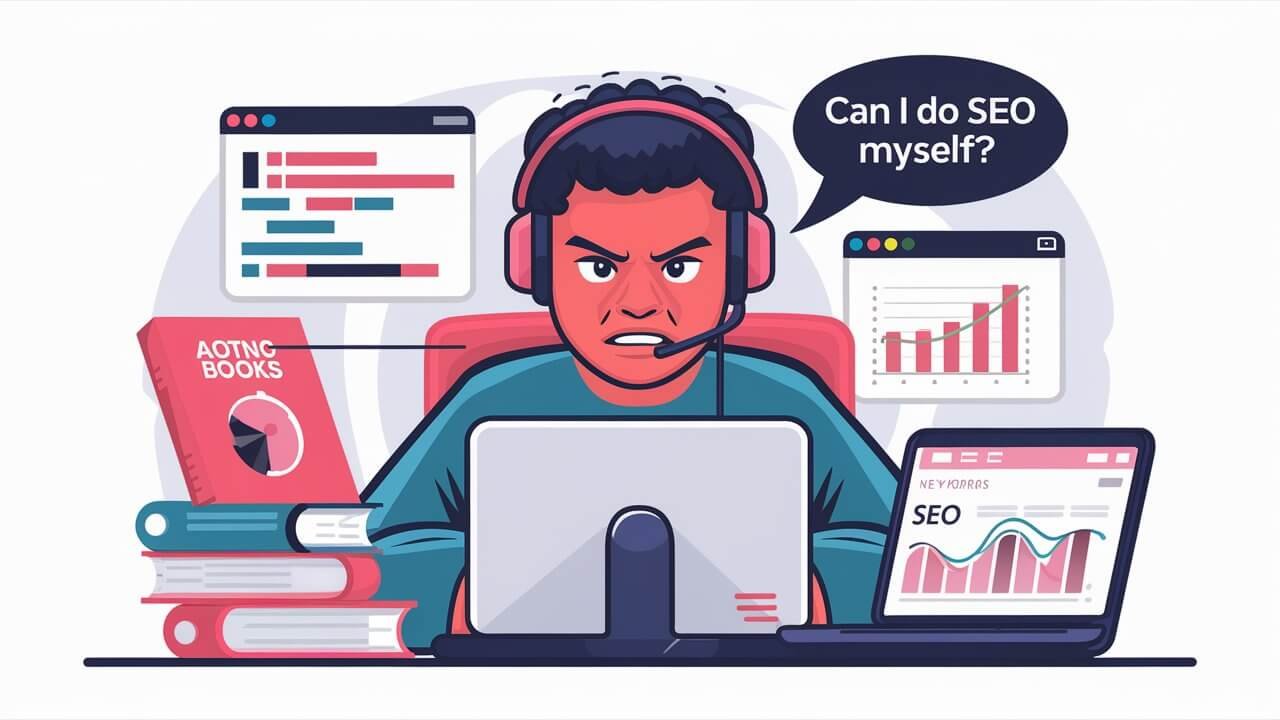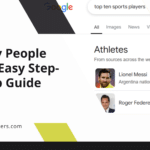
|
Getting your Trinity Audio player ready...
|
Search Engine Optimization (SEO) is a powerful tool for enhancing the visibility of your website on search engines like Google. Many business owners and individuals wonder, “Can I do SEO myself?” The answer is a resounding yes! With the right knowledge, tools, and commitment, anyone can manage their own SEO efforts and achieve significant results. This comprehensive guide will walk you through the essential steps to perform SEO yourself, empowering you to boost your website’s ranking and attract more organic traffic.
Understanding the Basics of SEO
What is SEO?
SEO involves optimizing your website to rank higher in search engine results pages (SERPs). It encompasses various strategies, including keyword research, on-page optimization, link building, and content creation, all aimed at improving your website’s visibility and authority.
Why is SEO Important?
SEO is crucial because it helps your website attract targeted traffic. Higher rankings on SERPs mean more visibility and potential visitors, which can translate into increased sales, leads, and overall business growth. Without SEO, your website may get lost in the vast sea of online content.
Key Components of SEO
Keyword Research
Keyword research is the foundation of any successful SEO strategy. It involves identifying the search terms your target audience uses to find information related to your products or services. Tools like Google Keyword Planner, SEMrush, and Ahrefs can help you discover relevant keywords with high search volume and low competition.
On-Page Optimization
On-page optimization refers to optimizing individual web pages to rank higher and earn more relevant traffic. Key elements include:
- Title Tags and Meta Descriptions: Ensure your title tags and meta descriptions are compelling and contain your target keywords.
- Header Tags (H1, H2, H3, etc.): Use header tags to structure your content and make it easy for search engines to understand the hierarchy of your information.
- URL Structure: Keep your URLs short, descriptive, and keyword-rich.
- Internal Linking: Link to other relevant pages on your website to improve navigation and distribute link equity.
- Alt Text for Images: Use descriptive alt text for images to help search engines understand their content.
Content Creation
Content is king in the world of SEO. Creating high-quality, valuable content that addresses your audience’s needs is essential. Focus on producing:
- Blog Posts: Regularly update your blog with informative articles related to your industry.
- Product Pages: Optimize your product pages with detailed descriptions, specifications, and customer reviews.
- Guides and Tutorials: Provide comprehensive guides and how-to tutorials to establish yourself as an authority in your niche.
- Multimedia Content: Incorporate videos, infographics, and images to make your content more engaging and shareable.
Link Building
Link building is the process of acquiring backlinks from other websites to improve your site’s authority and search engine ranking. Effective link-building strategies include:
- Guest Blogging: Write guest posts for reputable websites in your industry.
- Broken Link Building: Identify broken links on other websites and offer your content as a replacement.
- Skyscraper Technique: Create superior content and reach out to websites linking to inferior content to replace their links with yours.
- Social Media Promotion: Share your content on social media platforms to increase its visibility and attract natural backlinks.
Technical SEO
Technical SEO involves optimizing your website’s technical aspects to ensure search engines can crawl and index your site effectively. Key technical SEO practices include:
- Mobile-Friendliness: Ensure your website is responsive and performs well on mobile devices.
- Site Speed: Optimize your site’s loading speed by compressing images, leveraging browser caching, and minimizing JavaScript.
- XML Sitemap: Create and submit an XML sitemap to search engines to help them understand your site’s structure.
- Robots.txt: Use a robots.txt file to control which pages search engines should and shouldn’t crawl.
- HTTPS: Secure your website with HTTPS to protect user data and improve rankings.
Measuring and Analyzing SEO Performance
Google Analytics
Google Analytics is an essential tool for tracking your website’s traffic and understanding user behavior. Monitor key metrics such as organic traffic, bounce rate, and average session duration to gauge your SEO performance.
Google Search Console
Google Search Console helps you monitor your site’s presence in Google search results. Use it to check for crawl errors, submit sitemaps, and analyze search queries driving traffic to your site.
SEO Tools
Utilize SEO tools like SEMrush, Ahrefs, and Moz to conduct site audits, track keyword rankings, and analyze your backlink profile. These tools provide valuable insights to refine your SEO strategy.
Common SEO Mistakes to Avoid
Keyword Stuffing
Avoid keyword stuffing, which is the practice of overloading your content with keywords in an attempt to manipulate search rankings. This can lead to penalties from search engines and negatively impact your rankings.
Ignoring Mobile Users
With the majority of searches now conducted on mobile devices, neglecting mobile optimization can significantly harm your SEO efforts. Ensure your site is mobile-friendly and offers a seamless user experience across all devices.
Duplicate Content
Duplicate content can confuse search engines and dilute your rankings. Make sure each page on your website has unique, valuable content to avoid duplication issues.
Neglecting User Experience
A poor user experience can lead to high bounce rates and lower rankings. Focus on providing a fast, intuitive, and enjoyable experience for your visitors to keep them engaged and encourage return visits.
Conclusion
While SEO can seem daunting at first, with dedication and the right approach, you can successfully manage it yourself. By understanding the basics, implementing key strategies, and avoiding common pitfalls, you can enhance your website’s visibility, attract more organic traffic, and achieve your business goals. Remember, SEO is an ongoing process that requires continuous learning and adaptation to stay ahead of the competition.

























































